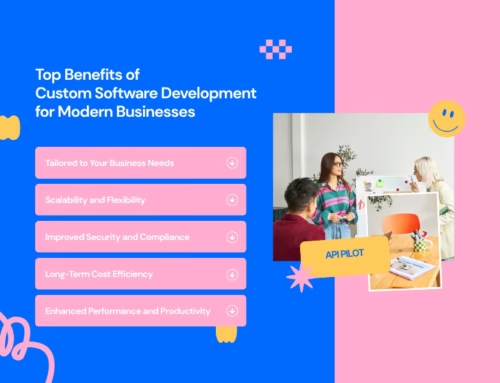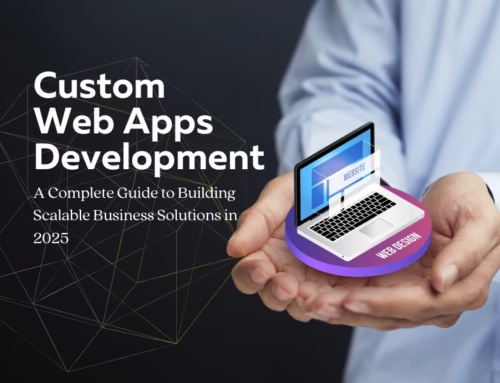How to Calculate the ROI of Custom Software Development
Introduction
Investing in custom software application development is a major decision for any business. Unlike off-the-shelf tools, custom software is tailored to your unique processes, goals, and workflows, offering competitive advantages that generic solutions simply cannot provide. However, decision-makers often ask a critical question: What is the return on investment (ROI) of custom software development?
In this blog, we’ll break down the ROI calculation process, explore key factors to consider, and provide a framework for business leaders to assess whether a custom solution will truly deliver value.
Why ROI Matters in Custom Software Application Development
Measuring ROI is not just about justifying upfront costs; it’s about ensuring the software aligns with long-term business strategy. ROI answers:
- How quickly will the investment pay for itself?
- What measurable benefits will it deliver?
- How does it compare to off-the-shelf solutions?
Ultimately, ROI enables business leaders to balance costs, risks, and opportunities when investing in custom software.
The ROI Formula for Software Projects
The general formula for ROI is:
ROI (%) = (Net Benefits ÷ Total Costs) × 100
Where:
- Net Benefits = (Financial Gains + Cost Savings + Productivity Improvements) – Maintenance Costs
- Total Costs = Development + Implementation + Training + Maintenance
This formula provides a clear, quantifiable way to evaluate your investment in custom software.
Step 1: Identify the Costs of Custom Software Application Development
The first step in calculating ROI is understanding the total costs involved. These include:
1. Development Costs
- Design, coding, and testing
- Integrations with existing systems
- Licensing or third-party tools
2. Implementation Costs
- Infrastructure setup (servers, cloud hosting, security)
- Migration from legacy systems
3. Training & Support Costs
- Staff onboarding
- Ongoing technical support
4. Maintenance Costs
- Bug fixes and updates
- Feature enhancements
- Security patches
Explore our Custom Software Development Services for more details on cost structures.
Step 2: Quantify the Benefits
Benefits can be both tangible and intangible.
Tangible Benefits
- Increased Revenue: Streamlined workflows can lead to higher sales.
- Cost Savings: Automation reduces labor costs and eliminates inefficiencies.
- Faster Operations: Custom workflows reduce delays in critical business processes.
Intangible Benefits
- Better Customer Experience: Tailored platforms enhance satisfaction.
- Scalability: Future-proofing ensures long-term adaptability.
- Competitive Edge: Proprietary features make your business stand out.
Step 3: Estimate Productivity Gains
Custom software often saves time across the organization. Example:
- Automating manual data entry can save 2 hours per employee per week.
- If 50 employees save 2 hours each at an average wage of $30/hour, that’s $156,000/year in productivity gains.
Step 4: Compare with Off-the-Shelf Software
Off-the-shelf solutions may seem cheaper initially, but they often come with hidden costs:
- Licensing fees that increase over time
- Limited customization
- Integration challenges with existing systems
By contrast, custom software application development may require higher upfront costs but eliminates recurring inefficiencies.
Compare with our E-commerce Development Services if you’re deciding between templates and custom solutions.
Step 5: Calculate Payback Period
The payback period is how long it takes for your software to generate enough benefits to cover its costs. For instance:
- Total costs: $500,000
- Annual benefits: $250,000
- Payback period = 2 years
A shorter payback period means higher ROI and reduced risk.
Step 6: Consider Risk and Intangibles
Not all ROI can be quantified. Some intangible benefits include:
- Improved brand reputation
- Better compliance and data security
- Long-term adaptability
Businesses seeking scalable solutions often explore our Custom API Development Services to future-proof integrations.
Practical Example of ROI Calculation
Scenario:
- Total costs = $300,000
- Annual revenue increase = $200,000
- Annual cost savings = $80,000
- Annual maintenance = $30,000
Net Benefits = $200,000 + $80,000 – $30,000 = $250,000
ROI = ($250,000 ÷ $300,000) × 100 = 83%
This shows that the investment will nearly double in value within two years.
Conclusion
Calculating ROI for custom software application development requires a balance of measurable metrics (cost savings, productivity) and strategic considerations (scalability, competitive edge). By following the outlined steps—identifying costs, quantifying benefits, and calculating payback—business leaders can make confident, data-driven decisions.
Custom solutions are not an expense—they’re an investment in future growth.
Frequently Asked Questions
You calculate ROI by dividing net benefits (revenue increase + cost savings – maintenance) by total development costs and multiplying by 100.
A good ROI is typically 50% or higher, but the ideal figure depends on industry, competition, and business strategy.
The payback period varies but usually ranges from 1–3 years, depending on costs and benefits realized.
Custom software often delivers higher ROI over the long term due to scalability and efficiency, despite higher upfront costs.
Yes. While harder to quantify, improved customer satisfaction, compliance, and brand reputation contribute significantly to ROI.
Get Started Today
Contact us today for a free consultation and get one step closer to your next big innovation.



